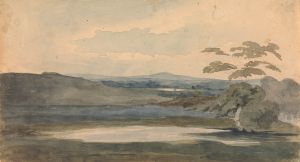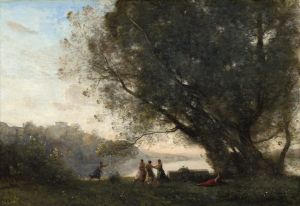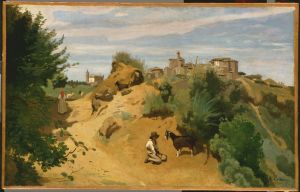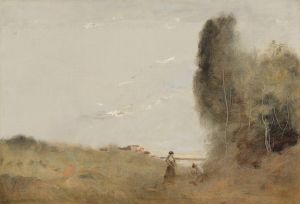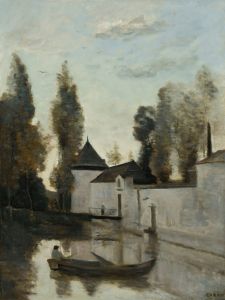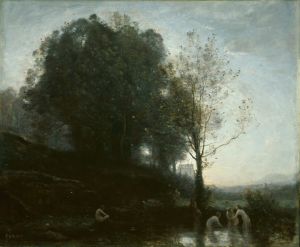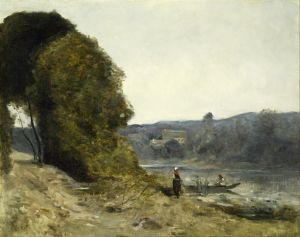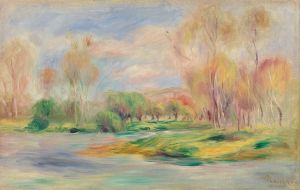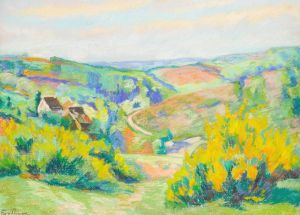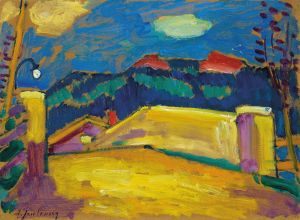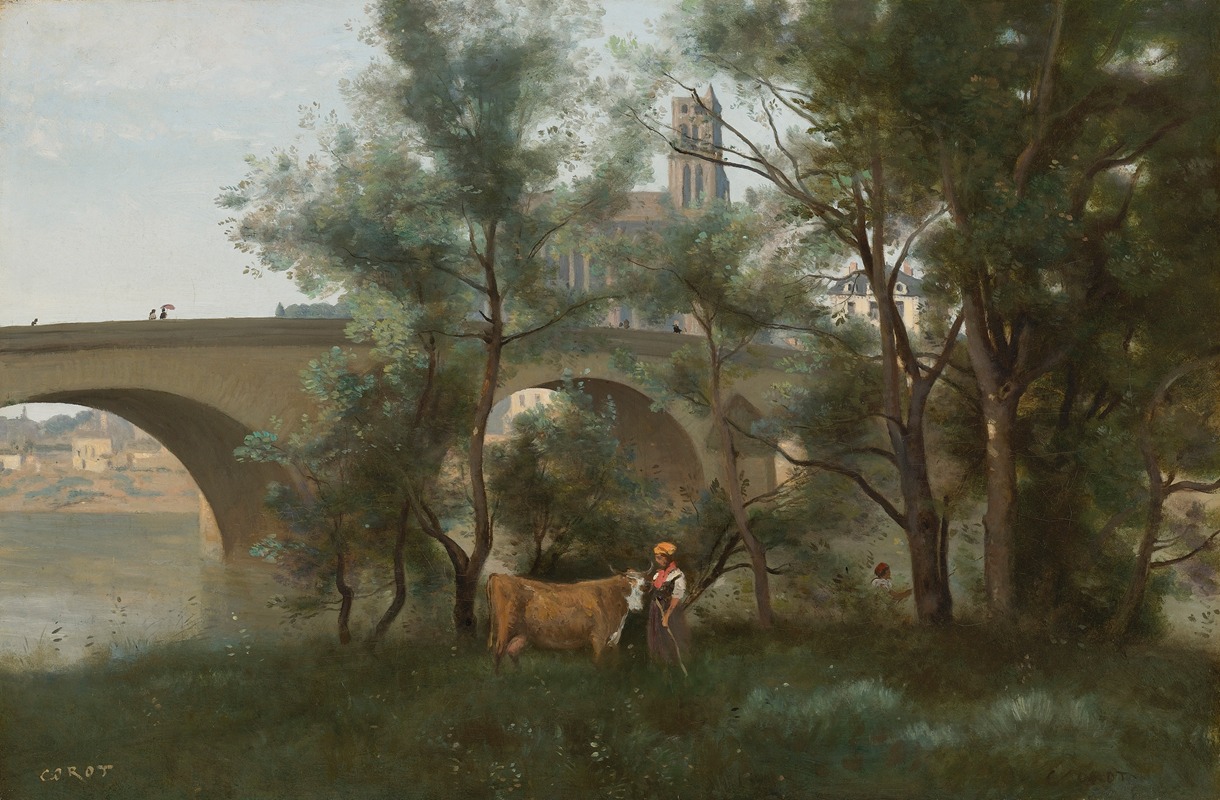
Mantes, Les Bords De La Seine Au Pied Du Pont
A hand-painted replica of Jean-Baptiste-Camille Corot’s masterpiece Mantes, Les Bords De La Seine Au Pied Du Pont, meticulously crafted by professional artists to capture the true essence of the original. Each piece is created with museum-quality canvas and rare mineral pigments, carefully painted by experienced artists with delicate brushstrokes and rich, layered colors to perfectly recreate the texture of the original artwork. Unlike machine-printed reproductions, this hand-painted version brings the painting to life, infused with the artist’s emotions and skill in every stroke. Whether for personal collection or home decoration, it instantly elevates the artistic atmosphere of any space.
Jean-Baptiste-Camille Corot was a pivotal figure in landscape painting, bridging the gap between the Neo-Classical tradition and the plein-air innovations that would later characterize the Impressionist movement. One of his notable works, "Mantes, Les Bords De La Seine Au Pied Du Pont," exemplifies his mastery in capturing the serene beauty of the French countryside.
Corot was born in Paris in 1796 and began his artistic career relatively late, after a brief stint in the family textile business. He studied under Achille Etna Michallon and Jean-Victor Bertin, both of whom were proponents of the Neo-Classical style. However, Corot's work gradually evolved, reflecting a more naturalistic approach that emphasized the effects of light and atmosphere.
"Mantes, Les Bords De La Seine Au Pied Du Pont" is a landscape painting that depicts the banks of the Seine River near the town of Mantes, located northwest of Paris. This area was a popular subject for artists due to its picturesque scenery and proximity to the capital. The painting captures a tranquil scene along the river, with the bridge serving as a focal point. Corot's use of soft, muted colors and delicate brushwork creates a sense of calm and harmony, characteristic of his mature style.
The composition of the painting is carefully balanced, with the bridge and its reflection in the water creating a sense of symmetry. Corot's attention to detail is evident in the rendering of the trees and foliage, which are depicted with a lightness and fluidity that suggest movement and life. The sky, a crucial element in Corot's landscapes, is painted with subtle gradations of color, enhancing the overall mood of serenity.
Corot's approach to landscape painting was innovative for his time. Unlike many of his contemporaries, who often idealized nature, Corot sought to depict it as he observed it, capturing the transient effects of light and atmosphere. This approach laid the groundwork for the Impressionists, who would further explore these themes in their work.
Throughout his career, Corot remained committed to plein-air painting, often working outdoors to capture the essence of a scene. This practice allowed him to develop a keen sensitivity to the nuances of natural light and color, which is evident in "Mantes, Les Bords De La Seine Au Pied Du Pont." The painting reflects Corot's ability to convey the quiet beauty of the French landscape, a quality that has endeared his work to generations of art lovers.
Corot's influence extended beyond his own time, impacting the development of modern art. His emphasis on capturing the effects of light and atmosphere resonated with the Impressionists, who admired his ability to convey the ephemeral qualities of nature. Artists such as Claude Monet and Camille Pissarro acknowledged Corot's role in shaping their artistic vision.
"Mantes, Les Bords De La Seine Au Pied Du Pont" is a testament to Corot's skill as a landscape painter and his contribution to the evolution of art in the 19th century. The painting remains a cherished example of his work, celebrated for its beauty and technical mastery. Through his art, Corot invites viewers to experience the tranquility and splendor of the natural world, a legacy that continues to inspire and captivate.






